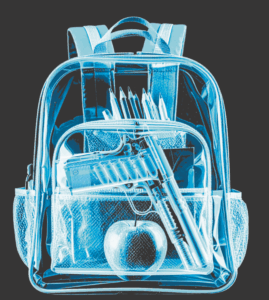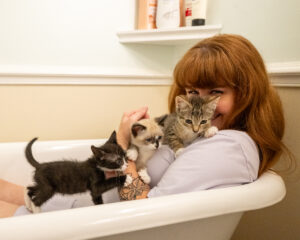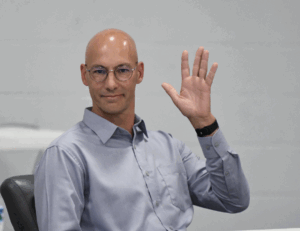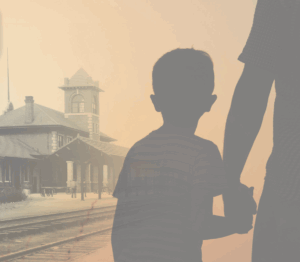
School board members want more in-person instruction for high school students
Members of the Wayne County Board of Education have asked high school principals to figure out what it would take to put more students in face-to-face learning come January.
But administrators and Central Office personnel say no decision or firm plan can be made until the more than 4,000 parents who have still not communicated their preference for virtual or hybrid learning return registration documents to their respective schools.
And even then, they say, the numbers could change the class offerings and make logistics associated with the change even harder to juggle.
The board took no formal action at a special meeting Tuesday, but the message was clear — high schools need to find a way to move from an A/B/C cohort to an A/B (every-other-week model) or something like it.
But those who are tasked with implementing the changes say that trying to balance a high school schedule with social distancing guidelines is difficult at best — and could limit what classes can be offered and who can take them.
Three high school principals came to speak to the board to share the consensus gathered from a meeting of all the county’s high school leaders.
Kevin Smith of Southern Wayne, John Bell of Charles B. Aycock and Lee Johnson of Eastern Wayne said all the principals want to see children back in classes, but that the complicated map to make that work in Wayne County high schools is daunting.
Because students change from class to class, the mechanics of making scheduling work with the required smaller class sizes and social distancing rules is a real challenge.
“Numbers are an issue for us,” Smith said.
He said that the three-cohort model — A/B/C — allowed high schools to deal with potential exposure to COVID-19 more easily.
If it was suspected that a student had been exposed to the virus, there would be a built-in quarantine period to make sure they did not spread the infection to others.
“There have been many, many times where families had a positive test, but it didn’t affect the school because they hadn’t been in our building,” Smith said.
The time left to come up with new schedules also is a factor, the principals said, adding that there are only a few weeks left before Christmas break and master schedules at the high school level can take months to work out.
But if high schools started next semester on the current A/B/C plan, it would allow principals and other personnel the chance to get the A/B cohort model in place, Bell said.
Bell said teachers and administrators all want to see children get more face-to-face learning.
“We would rather have an A/B schedule if we can make it work,” Bell said. “We are all in agreement our kids need more face-to-face instruction.”
The main concern is the core classes, the principals said.
Making sure students have access to those required sessions and the limited seats available because of social distancing requirements means that something has to give — and that could mean extras like electives and advanced placement classes.
Chairman Chris West said there is no question that learning was not as productive under the three-cohort model.
“I think high school kids would be better-served being back every other week instead of every third week,” West said.
Bell said making that happen would take some “outside-the-box thinking.”
Johnson said that while she and her Eastern Wayne colleagues agree that students who have more face-to-face teaching time get better results, students’ school success is not the only factor to consider about changing to the every-other-week format.
“There are going to be more teachers concerned about safety,” she said.
Smith also expressed concern about adding more exposure for teachers.
Less contact, he said, is less risky.
“I am trying to balance the needs of my staff and the needs of my students,” he said, adding that student learning is still his and his teachers’ top priority.
Students would not be getting that much more contact with their teachers — the change in face-to-face time is not that significant — and there would be more risk of potential exposure, he added.
The decision to change the model might be a factor for parents as well, Smith said.
“My concern is that if we say we are going to two-week cohorts, people might change their minds and add so many more people that the numbers won’t work,” he said.
Parents could also decide that the risk is too great and move their children to all-virtual, he added.
Board member Jennifer Strickland said that for her, based on her own personal experience, while there might be some students who are thriving under the virtual learning model, others are stagnating.
“They are learning the week they are in the building,” she said. “The other two weeks, they are bang-up Google searchers.”
And those students are not learning, Strickland said.
She added that some high school students have picked up jobs because of the hybrid format, which also keeps them from the high school instruction they need.
“I need you to figure out how to get as many of these kids in the seats as possible,” Strickland said. “We are going to lose the most vulnerable of our students.”
Interim Superintendent Dr. James Merrill agreed that many high school students have put work as their main priority, adding that “school is when they can fit it in.”
Smith suggested that the economic stress the pandemic has placed on families is part of the reason so many young people are making that choice.
If they are placed in a situation where losing that paycheck that is helping their families is a possibility, Smith said he is not sure that returning to school will be their choice.
“My fear is that we might see some families making some tough decisions,” he said.
The board asked administrators to head back to their schools and estimate, with every factor taken into account, including removing excess furniture in the classrooms, the maximum number of students who can fit in a room.
Dr. David Lewis, assistant superintendent for accountability and information technology, said the change to an A/B cohort is possible, but added that principals would need to make a lot of adjustments, some of which might not be popular.
“If they come back to us and say this is what it takes to get that done, we need to get out of their way and let them do it,” Lewis said.
West said he understands there could be insurmountable complications, adding that if the A/B switch is not possible, “there is no sense in continuing the discussion.”
Merrill assured the board that the principals are already working to try to make the change.
“If we can get them back on an A/B (cohort), that is your preference,” he said. “I am confident they heard you.”
The board is expected to make its final decision at its Dec. 7 meeting.

A loaded discussion

Fighting for their lives

Goldsboro loses a giant

“I’m a flippin’ hurricane!”
Public Notices — Dec. 14, 2025

Belting it out

Legendary

Final Four!


